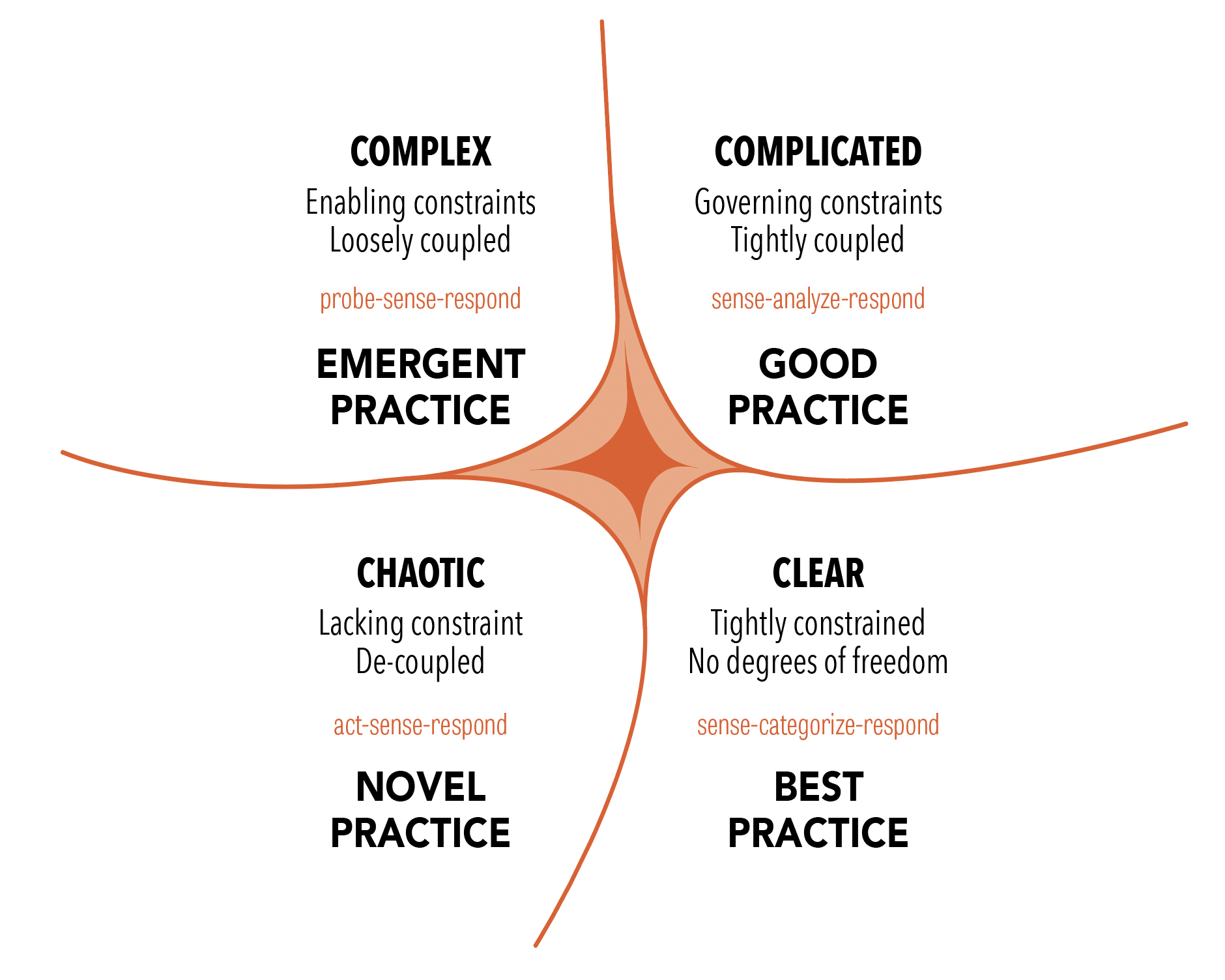
Leading in Chaos
I was working with a senior leader last week who is leading a large organisation which is under a huge level of pressure to turn results around. And the leader themself is under an enormous amount of personal pressure. The breakthrough in the conversation was the Cynefin Framework (Dave Snowden and Mary Boone).
The context is that this person leads a global manufacturing business that faces a number of challenges, some coming from the commercial context, some from the history, culture and behaviour within the business. The combination of all of these was creating a perfect storm, as they say.
At the same time their own boss was making higher demands and exerting closer scrutiny by arranging extra meetings and vociferously demanding to know what progress was being made.
The natural reaction for this leader was to book extra meetings with their staff, ask for more reports and pass on the pressure to meet all targets.
This seemed simultaneously both the right thing to do and the wrong thing to do.
It was the right thing because it was focussed on ensuring accountability, ensuring people were cognisant of the pressure on the business and it was an attempt to create more sense of control.
In our discussion we knew it was intuitively the wrong thing to do also and it was the Cynefin Framework (Dave Snowden and Mary Boone) that helped us make sense of why that was so.
If the context is simple or complicated then focussing on getting really good processes or the right experts and pushing hard is a sensible strategy. We put more control into the system.
If the context is complex, which it undeniably was, ie with many interacting and interdependent casual factors, then trying to fix it with exerting more control will tip the situation into chaotic which, as Snowden says “is very expensive to come back from”.
Yet it is highly understandable why leaders would want to exert more control in a system that feels out of control. It is human nature.
Whilst they are not advocating that you ignore systems and processes and pressure, there are some rules of thumb for leading in the complex domain.
1 Connect the system to more of itself. When people who do not usually talk to each other have a conversation, newness and new solutions emerge.
2 Draw on the distributed intelligence.
3 Hold people. The edge of chaos is an anxious place to be. We are not trying to control the sea, we are learning to surf.
4 Learn to spot patterns. The thing we know for certain is that things will happen that we could not have predicted. Listen to the internal and external tom toms to be scanning for what is emerging.
5 Create the conditions from which good things will emerge. This is very different to Have a detailed plan and manage tightly towards it.
6 Set boundaries, for example ensure everyone has a clear sense of purpose.
7 Try things out experimentally. Amplify the good things, deprive the others of oxygen.
8 Encourage dissent and diversity. Otherwise your blind spots get bigger and bigger.


